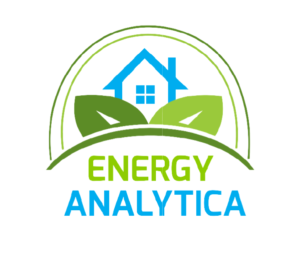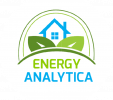Materials selection affects many other high-performance goals in addition to indoor air quality. Important sources of IAQ contaminants are interior building materials, office furniture, and equipment. Interior building materials – including carpets, carpet padding, paints, sealants, adhesives, floor and ceiling tiles, cabinets, molding, composite wood products, and other wood work – can contain contaminants that are gradually emitted throughout the life of the material. The contaminants include volatile and semi-volatile organic compounds (VOCs and SVOCS, respectively), and small particulate substances that act as eye or throat irritants. It is important to select products whose emissions are low and the less hazardous.
CALGreen Code Section 5.504.4: Finish material pollutant control.
Finish materials shall comply with Sections 5.504.4.1 through
CALGreen Code Section 5.504.4.6. 5.504.4.1: Adhesives, sealants, and caulks.
Adhesives, sealants and caulks used on the project shall meet the requirements of the following standards:
1. Adhesives, adhesive bonding primers, adhesive primers, sealants, sealant primers and caulks shall comply with local or regional air pollution control or air quality management district rules where applicable, or SCAQMD Rule 1168 VOC limits, as shown in Tables 5.504.4.1 and 5.504.4.2. Such products also shall comply with the Rule 1168 prohibition on the use of certain toxic compounds (chloroform, ethylene dichloride, methylene chloride, perchloroethylene and trichloroethylene), except for aerosol products as specified in subsection 2, below.
2. Aerosol adhesives, and smaller unit sizes of adhesives, and sealant or caulking compounds (in units of product, less packaging, which do not weigh more than one pound and do not consist of more than 16 fluid ounces) shall comply with statewide VOC standards and other requirements, including prohibitions on use of certain toxic compounds, of California Code of Regulations, Title 17, commencing with Section 94507. Tables not shown. Refer to code.
CALGreen Code Section 5.504.4.3: Paints and coatings.
Architectural paints and coatings shall comply with VOC limits in Table 1 of the ARB Architectural Coatings Suggested Control Measure, as shown in Table 5.504.4.3, unless more stringent local limits apply. The VOC content limit for coatings that do not meet the definitions for the specialty coatings categories listed in Table 5.504.4.3 shall be determined by classifying the coating as a Flat, Nonflat, or Nonflat-High Gloss coating, based on its gloss, as defined in Subsections 4.21, 4.36, and 4.37 of the 2007 California Air Resources Board Suggested Control Measure, and the corresponding Flat, Nonflat, or Nonflat-High Gloss VOC limit in Table 5.504.4.3 shall apply.
CALGreen Code Section 5.504.4.3.1: Aerosol paints and coatings.
Aerosol paints and coatings shall meet the PWMIR Limits for ROC in Section 94522(a)(3) and other requirements, including prohibitions on use of certain toxic compounds and ozone depleting substances, in Sections 94522(c)(2) and (d)(2) of California Code of Regulations, Title 17, commencing with Section 94520; and in areas under the jurisdiction of the Bay Area Air Quality Management District additionally comply with the percent VOC by weight of product limits of Regulation 8 Rule 49.
CALGreen Code Section 5.504.4.3.2: Verification.
Verification of compliance with this section shall be provided at the request of the enforcing agency. Documentation may include, but is not limited to, the following:
1. Manufacturer’s product specification
2. Field verification of on-site product containers
CALGreen Code Section 5.504.4.4: Carpet systems.
All carpet installed in the building interior shall meet at least one of the following testing and product requirements:
1. Carpet and Rug Institute’s Green Label Plus Program;
2. Compliant with the VOC-emission limits and testing requirements specified in the California Department of Public Health Standard Method for the Testing and Evaluation of Volatile Organic Chemical Emissions from Indoor Sources Using Environmental Chambers, Version 1.1, February 2010 (also known as CDPH Standard Method V1.1 or Specification 01350);
3. NSF/ANSI 140 at the Gold level or higher;
4. Scientific Certifications Systems Sustainable Choice; or
5. Compliant with the Collaborative for High Performance Schools California (2014 CA-CHPS) Criteria and listed in the CHPS High Performance Product Database. 5.504.4.4.1 Carpet cushion. All carpet cushion installed in the building interior shall meet the requirements of the Carpet and Rug Institute Green Label program.
CALGreen Code Section 5.504.4.4.2: Carpet adhesive.
All carpet adhesive shall meet the requirements of Table 5.504.4.1.
CALGreen Code Section 5.504.4.5: Composite wood products.
Hardwood plywood, particleboard, and medium density fiberboard composite wood products used on the interior or exterior of the building shall meet the requirements for formaldehyde as specified in ARB’s Air Toxics Control Measure (ATCM) for Composite Wood (17 CCR 93120 et seq.). Those materials not exempted under the ATCM must meet the specified emission limits, as shown in Table 5.504.4.5. Table not shown. Refer to code.
CALGreen Code Section 5.504.4.5.1: Early compliance. Reserved.
CALGreen Code Section 5.504.4.5.3: Documentation.
Verification of compliance with this section shall be provided as requested by the enforcing agency. Documentation shall include at least one of the following:
1. Product certifications and specifications.
2. Chain of custody certifications.
3. Product labeled and invoiced as meeting the Composite Wood Products regulation (see CCR, Title 17, Section 93120, et seq.).
4. Exterior grade products marked as meeting the PS-1 or PS-2 standards of the Engineered Wood Association, the Australian AS/NZS 2269 or European 636 3S standards.
5. Other methods acceptable to the enforcing agency
CALGreen Code Section 5.504.4.6: Resilient flooring systems.
For 80 percent of floor area receiving resilient flooring, installed resilient flooring shall meet at least one of the following:
1. Certified under the Resilient Floor Covering Institute (RFCI) FloorScore program;
2. Compliant with the VOC-emission limits and testing requirements specified in the California Department of Public Health’s 2010 Standard Method for the Testing and Evaluation Chambers, Version 1.1, February 2010;
3. Compliant with the Collaborative for High Performance Schools California (2014 CA-CHPS) Criteria Interpretation for EQ 7.0 and EQ 7.1 (formerly EQ 2.2) dated July 2012 and listed in the CHPS High Performance Product Database; or 4. Products certified under UL GREENGUARD Gold (formerly the Greenguard Children’s & Schools Program).
CALGreen Code Section 5.504.4.6.1: Verification of compliance.
Documentation shall be provided verifying that resilient flooring materials meet the pollutant emission limits.
Intent:
The purpose of these requirements is to reduce the volatile organic compounds (VOC) of finish materials commonly installed on a project, improving air quality for building occupants. The low-VOC provisions are based on the recommendations, guidelines and regulations of the Air Resources Board cited in each section. Regulations for aerosol adhesives and paints, and for composite wood products, are found in California Code of Regulations, Title 17, as noted above.
Note: See Chapter 8 of this guide for forms and templates.
Compliance Method:
Specify finish materials that meet the limits of VOC shown in the tables for adhesives and sealants, paints and coatings, and composite wood products (particle board and hardboard casework). Flooring products (carpet systems and resilient flooring) shall be specified to meet VOC limit criteria as tested by the listed organizations. Substitutes may be approved by the local enforcing authority if it deems equivalency.
Suggestion:
Retain product data sheets for on-site verification by the enforcing agency and for the operation and maintenance manual.
Enforcement:
Plan intake: The plan reviewer should confirm that material specifications listed in the construction documents meet VOC emission limits.
On-site enforcement: The inspector should verify product data sheets/containers furnished by the contractor to verify that finishes specified on the approved plans and specifications are installed or stored on site. The inspector may verify data on material containers or specifications provided with products, or accept a self-certification form.
(Excerpted from ‘Guide to the 2019 California Green Building Standards Code Nonresidential’ – Chapter 5)




